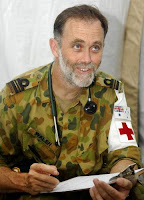YOU can never have too many photographs of a futuristic-looking rescue submarine being driven into the cargo bay of one of the world’s largest transport aircraft.
This is the NATO Submarine Rescue System being inched aboard an RAF C17 Globemaster at Prestwick Airport in Scotland as the Navy’s ultimate ‘emergency service’ is tested.
Over the next week or so, the white submarine will carry out a mock rescue from a stricken boat off Norway to test the ability of the ?47m system – and the men and women behind it – to respond to a crisis anywhere in the world.
The distinctive white Submarine Rescue Vehicle is the instantly-recognisable ‘face’ of NATO’s rescue system, which is based at Faslane, but there’s much more to this underwater emergency service which is actually owned by Britain, France and Norway.
There’s a robot submersible used to locate a downed submarine, clear away any debris and deliver the life-saving pods through an escape hatch.
There’s the small rescue submarine itself, crewed by two pilots and a rescue chamber operator, and capable of rescuing 15 submariners at a time – at depths of up to 2,000ft (610m).
And there’s a portable decompression and medical support unit which can take up to 68 deeps.
It requires 28 lorries, two Globemasters and three even larger Antonov transport aircraft to move the entire system – and it’s expected to deploy to a stricken submarine within 56 hours.
Hence the dry (or rather wet) run off Bergen in western Norway.
There’s already been a successful test dive for the kit in Loch Long at the RN’s armament depot in Coulport. But this is the first time the entire rescue apparatus has been moved by air.
“The system works,” explained Brian Grant, the rescue system’s base manager. “We’ve proved that time and again in various exercises but the one thing we’ve never done is transport the entire system by plane.
“We’re confident we can do it – this is just the final tick in the box.
“We train constantly to make sure that we’re ready at a moment’s notice. Our loch dip at Coulport was really valuable in keeping our hand in and was a great success.”






















